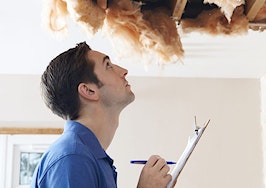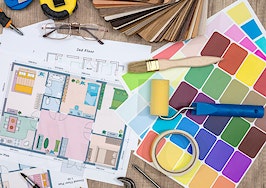Homeowners looking to sell often seem confused over what constitutes an improvement versus deferred maintenance. It’s an important distinction because only genuine improvements over what is generally expected in a sellable home can be monetized in a list price.
We hope that this list will help clarify the differences and help you to explain to your clients what they can and can’t price higher for.
1.Painting the exterior
Deferred maintenance: Painting the exterior of your house because the paint was peeling off. The condition of the exterior of the house is an issue for any buyer who sees peeling paint, rotted eaves or gaps in siding.
Fixing these issues and painting the exterior is not an improvement, and homeowners need to tend to the basics to avoid price reduction conversations that would inevitably arise during an inspection.
Improvement: Painting an exterior that is already in good shape and selecting an updated color palette or adding architectural elements such as a gazebo or patio cover.
2. Painting the interior
Deferred maintenance: Painting the interior of the house to address areas where walls show excessive signs of wear and use. Baseboards, doors and walls need to be free of marks, dirt and other impacts from usage.
Improvement: Painting the interior of the house with contemporary, neutral colors to cosmetically attract a buyer. It has been shown to add value depending on the colors used. Painting out oak cabinets, built-ins, baseboards, doors, door casings, and stairs white or high gloss black would also update the house for today’s buyers.
3. Roofing
Deferred maintenance: Replacing a roof that is damaged by hail or age. The roof damage needs to be repaired or replaced as the damage would come up in an inspection, and the house might not be able to close with a lender until the issue was fixed.
Improvement: Replacing a roof and using a higher-quality material that has a longer life. Adding solar panels to a roof could also add value when marketed as an eco-friendly improvement.
4. Carpeting
Deferred maintenance: Replacing worn, torn, soiled or stained carpeting. A seller cannot expect to get a good price for their home when it looks like it has been lived in hard and the flooring is damaged.
Age and use is part of living in a home, and when carpeting is in poor condition, it impacts the buyer experience and the price for the home.
Similarly, stretching and cleaning wrinkled carpeting is not an improvement and brings no added value to the house. It does make for a better buyer experience when looking at the house online and in person.
Improvement: The house can be marketed with “new carpeting” and the quality of the carpeting can be considered an improvement if it is a higher grade than what is typically used by sellers fixated on budget.
5. Kitchen and bathrooms
Deferred maintenance: Repairing kitchen and bath tile countertops, cleaning grout, recaulking tubs and sinks, and replacing a shower floor that is beyond help to get clean.
Improvement: Replacing kitchen and bathroom countertops with granite, quartz or marble adds value to homes. If the existing counters are in good shape and not totally out of date, replacing them with a higher quality material or stone is an investment that can be monetized.
6. Floors
Deferred maintenance: Existing wood floors in a house that are scratched and worn getting refinished or restained. No value was added.
Improvement: When the existing floors are wood or tile and are in good shape, a seller who replaces them with on-trend wide plank hardwoods or other contemporary material is adding value to the home.
7. Windows and screens
Deferred maintenance: Cleaning windows and repairing screens that are damaged.
Improvement: Replacing windows with vinyl insulated brands adds value to the house.
8. Landscaping
Deferred maintenance: Fixing landscaping that is overgrown, lawns that are burned out and dead, trimming back trees and shrubs that are overgrown, and fixing the irrigation system that is not working.
These are things the owner should have done as part of ongoing maintenance for the property and had in working order while they were living in the house. A buyer is going to expect these things to be in working order as part of the purchase.
Improvement: Adding pavers, stained or stamped concrete patios and walkways, adding other garden elements such as trellis or covered patio. These are things that can be marketed as added value items in the sale.
The bottom line
When a homeseller says they want to get every penny they put in preparing the house back in an offer, that expectation is not realistic.
Savvy agents can use some of the updating to market the property and let buyers know the house is up to date on maintenance concerns and then use the marketable improvements to set the purchase price.
John Norris is a Realtor with Norris4Homes – Keller Williams Realty. Connect with him on Facebook.
Jennie Norris is the chairwoman of International Association of Home Staging Professionals. Connect with her on Facebook or Twitter.













